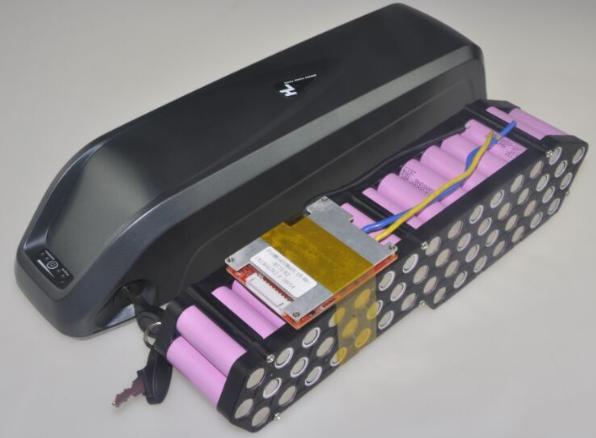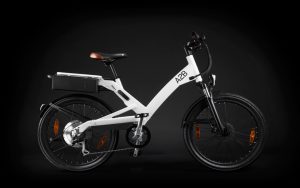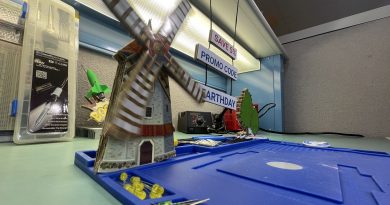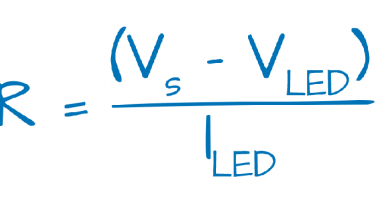Testing Lithium-Ion Batteries for Electric Bikes
Testing lithium-ion batteries efficiently is more important now than ever. In this article, we explore methods of testing lithium-ion batteries. We also detail how to perform full-cycle testing to effectively characterize the health of your lithium-ion battery. The advantages of lithium battery technology over traditional lead-acid batteries are clear. Improved energy density allows for compact, lightweight solutions with higher energy capacities and allows items such as electric bikes and cell phones to be lighter and stay charged longer and travel further. As lithium-ion batteries become mainstream, a standardized testing method that can reveal battery capacity and long-term health is essential. Old-fashioned battery testers that simply measure voltage and impedance do not accurately measure lithium battery storage capacity. Lithium-ion batteries retain a constant level of internal resistance even as they age. In the figure below you see the relationship between capacity and resistance of a Li-ion battery cycled at 1C.
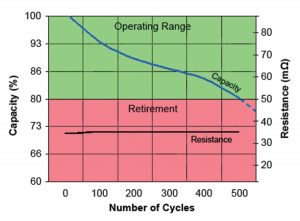
Combined result of five Li-ion cycled at 1C: Charge: 1,500 mA to 4.2 V, 25°C Discharge: 1,500 mA to 2.75 V, 25°C from from BatteryPowerOnline.com
From the figure, it is clear that impedance is not a good indicator of the overall storage capacity of a lithium-ion battery. It stays close to flat even as the battery capacity goes from 100% of its original value to around 50%. There are better ways of testing lithium-ion batteries. These include discharge tests, voltage tests (not effective for Li-ion), Ohmic test (not effective for Li-ion), rapid testing, full-cycle testing, and battery management system monitoring. To accurately measure the health of a lithium battery static and dynamic discharge tests should be performed independently.
Though it may sound tedious, full-cycle testing can be easy with the right tools such as a DC programmable electronic load tester. Full cycle testing consists of at least one complete cycle of discharge-charge-discharge. This type of test provides the most accurate measurements possible. When cycle testing lithium-ion batteries both current and voltage levels should be recorded throughout the test. A DC electronic load tester is a tool that can be used to discharge at a constant current and programmed according to your charge-discharge cycle requirements. These instruments connect to a PC via RS-232 or USB and run full cycle tests on their own with some simple programming using software such as Labview or Matlab.
Sample Labview VI’s are available from Array that shows simple programs you can use to program your battery cycle tests. Labview Source code for the DC Load 372XA series with sample .vi and .ctl files.
Two approaches for lithium-ion battery testing in manufacturing are random sampling and total population testing. Random Sampling is one method where QC personnel randomly selects a lithium-ion battery or a sub-set of batteries from a production run and runs hundreds of charge-discharge cycles in order to accurately categorize the long-term performance. Random sampling prevents systemic bias and allows us to study the overall battery population without needing to test everyone. Another approach that can be taken is running fewer charge-discharge cycles (2-5) on every battery in the population or a larger sub-set. In this method, a QC expert could verify the short-term characteristics of every battery tested adheres to the rated specifications.
When configuring cycle testing with your DC Load you should keep in mind that a maximum charge voltage and minimum discharge voltage level should be established. The best way to characterize your battery is done by discharging and charging at a constant current. You can determine your current (A) value by the C rating of the battery you are charging and discharging. Determine the voltage limits you are interested in by keeping in mind what % capacity range you are interested in collecting results. The larger the range you test the lower the longevity you can expect of the battery over its lifetime. Running cycles by performing a discharge to 30% capacity and a charge to 80% capacity is a conservative approach. Running full discharge-charge tests might be better for a random sampling QC approach.
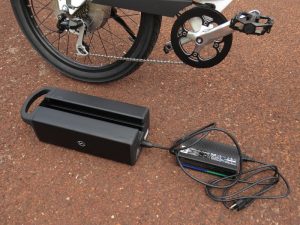
A picture of the lithium-ion battery for the A2B Alva+ that will be tested from ElectricBikeReport.com; cells manufactured by Samsung and enclosed in Aluminum. Alva+ battery specs: 36V, 13.2 Ah
When selecting a DC Electronic Load tester ensure you select one that will operate at the current and voltage levels you require. Take note of the C rating of your battery when calculating your charge-discharge cycle. (Ex: A 1 amp-hour battery discharged at 1C would be discharged at 1 Amp for 1 hour. At 2C the 1 amp-hour battery would be discharged at 2A for 30 minutes. On the other hand at 0.5C the current discharge rate is 500 mA for 2 hours.)
Stay tuned for our next blog article in this testing lithium-ion battery series where we share our results and LabView source code for our lithium battery tests.
